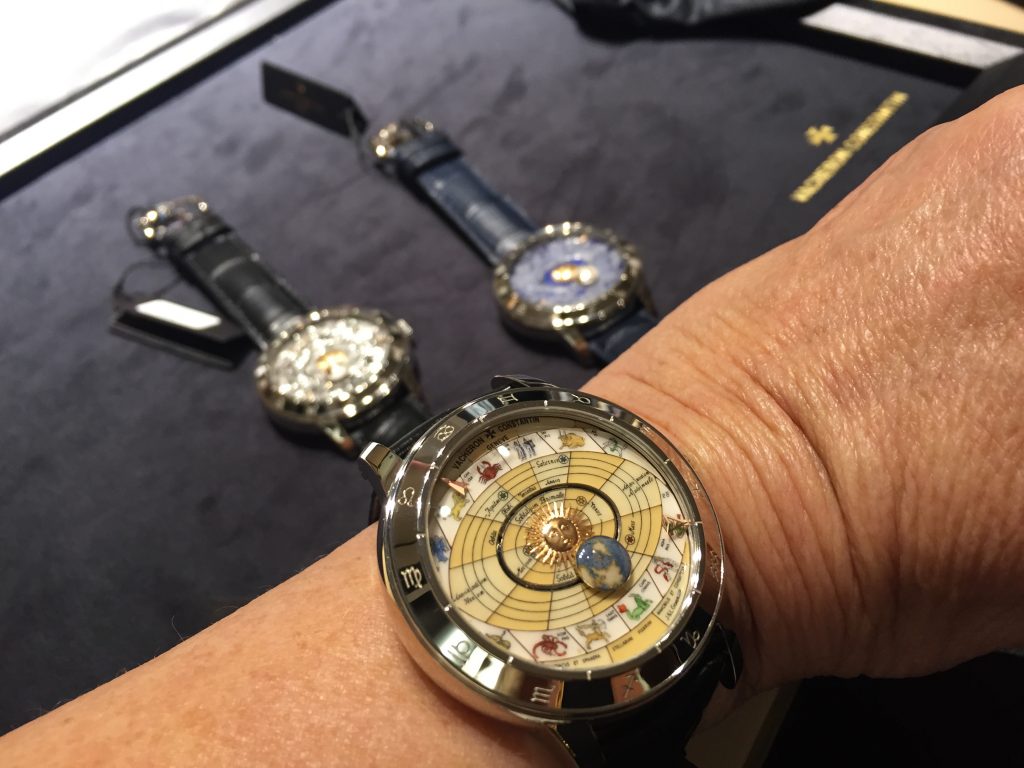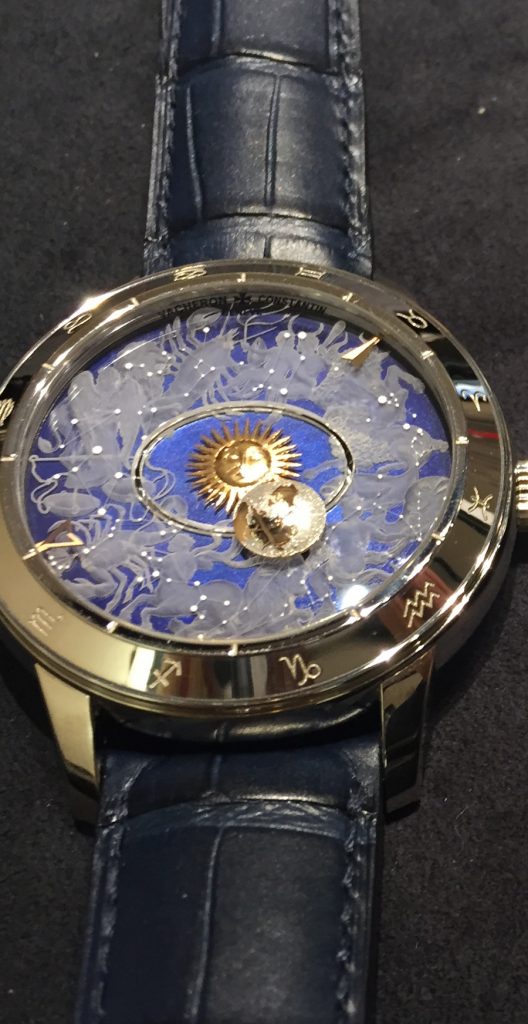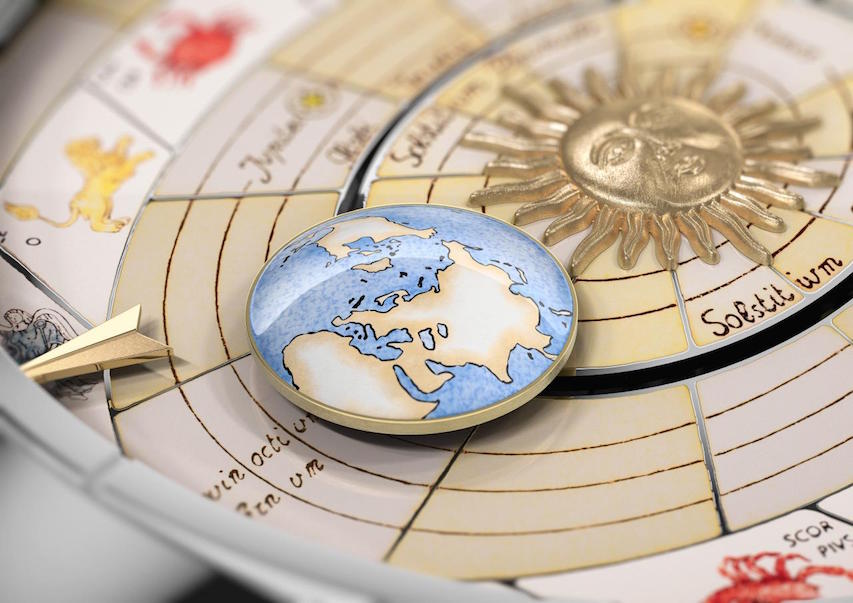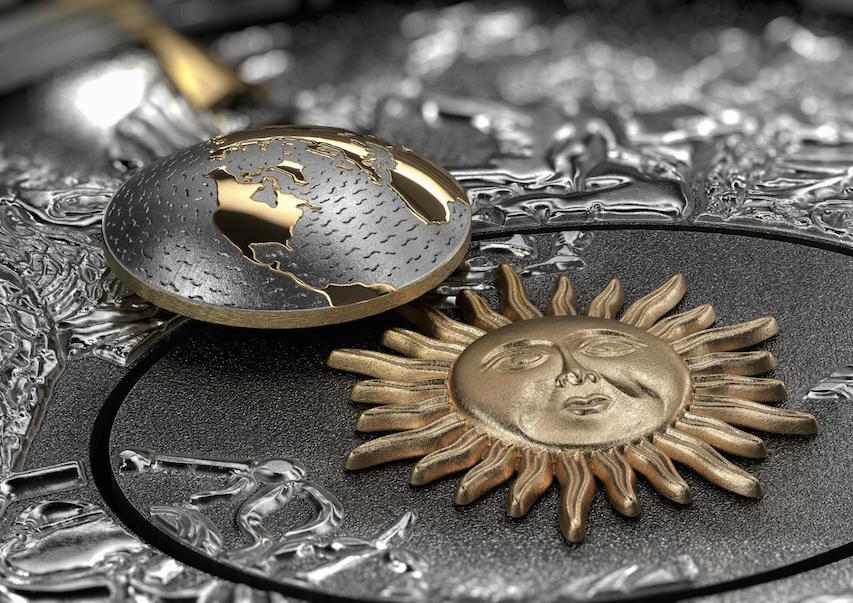
Vacheron Constantin Metiers d’Arts Copernicus Celestial Spheres 2460 RT watches as unveiled at SIHH 2017 (photo: R. Naas)
At SIHH 2017, Vacheron Constantin had so many complicated and special timepieces to show this year that is was like being a kid in a candy store. One timepiece that particularly enthralls us is the Metiers d’Art Copernicus Celestial Spheres 2460 RT — a tribute to great astronomical discoveries, inspired by Nicolas Copernicus. The watch is definitively equal parts work of art and technical mastery, with three different expressions of the arts and a new caliber with original displays. In typical Vacheron Constantin style, the Copernicus- offered in three versions — bears the Hallmark of Geneva attesting to its extraordinary craftsmanship.
Nicolas Copernicus needs little introduction. The Renaissance mathematician and philosopher was among the first to proclaim that the earth did not sit at the center of the universe. His theory stated that the earth, in fact, rotated on its axis around the sun and that the moon rotated around the earth. It is from this period-defining thought that the newest release from Vacheron Constantin draws its namesake and inspiration for time display.
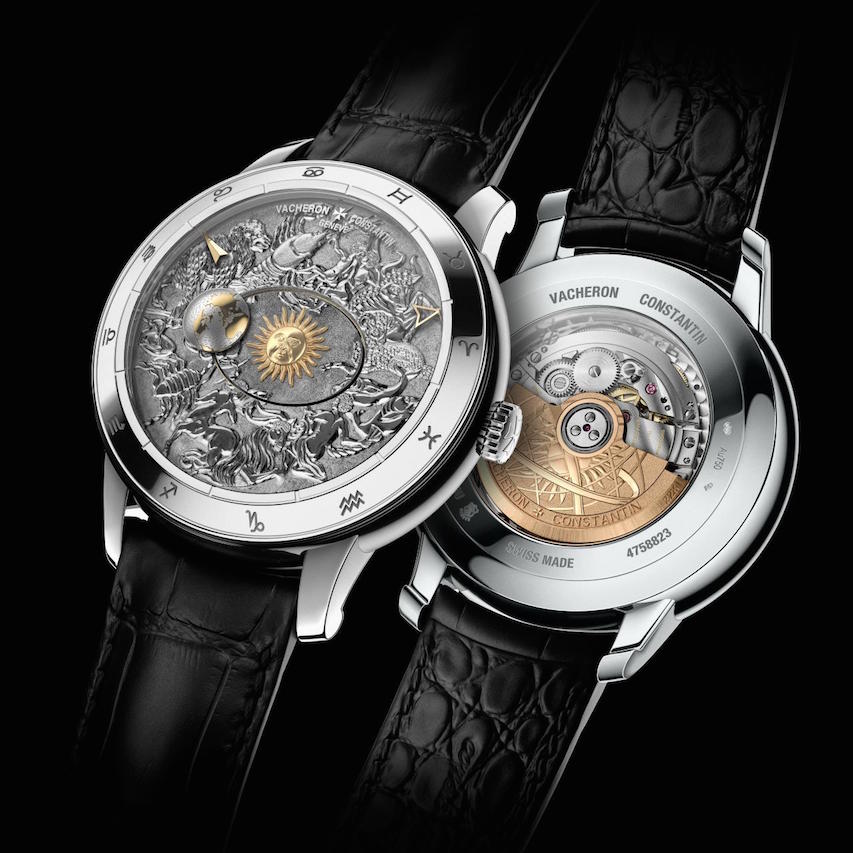
The Vacheron Constantin Metiers d’Art Copernicus Celestial spheres 2460 RT houses an all-new movement.
Vacheron Constantin Metiers d’Art Copernicus Celestial Spheres 2460 RT by the Numbers
The Vacheron Constantin Metiers d’Art Copernicus Celestial Spheres 2460 RT watch is driven by an entirely new movement, the self-winding calibre 2460 RT. Three years in the R&D stages, the movement allows for time to be displayed in a heliocentric fashion, via two triangular peripheral gold hands: one cut out for the hours and a solid one for minutes. The hands glide around the rim of the dial and are driven by dedicated wheels that are positioned on the outer part of the movement.
The elliptical path of the earth around the sun furthers the heliocentric theme. The first complication displays the mean solar day by taking into account the earth spinning on its axis. The second complication, achieved by the tropical gear train, is the earth’s elliptical orbit around the sun every 365.2421898 days to account for one tropical year. One of the things that makes this watch so incredible is the three-dimensional orbs that represent the Earth and the fact that the Earth actually takes the allotted 365.24 days to orbit the sun in the center of the dial. Yes, you heard right: the Earth moves around the dial only once every 365.24 days. The extreme precision inherent in this watch means that the tropical year function requires just one adjustment every 8,000 years.
The 43mm gold cases houses the 352-part mechanical self-winding movement that offers 36 hours of power reserve. All functions of the watch are operated via the winding crown. The three models are presented on Mississippiensis alligator leather straps secured by a gold buckle and delivered in a wooden box containing a magnifying glass.
The Dials of the Copernicus
To artistically capture the technological innovation, the in-house artisans of the manufacturer have selected three different graphic depictions of Andreas Cellarius, a 17th century Dutch-German cartographer, and author of one of the most important sky maps, Harmonia Macrocosmica, in a baroque style.
The dials of each of the Metiers d’ Arts Copernicus watch comprise two distinct parts: an oval center Sun with a glowing hand-engraved gold face,; an outer disc dedicated to the elliptical depictions. Between the two lies a small elliptical groove in which the Earth (a tiny gold domed glove measuring 6.8mm in diameter) orbits the sun. The Earth offers a polar view of the continents based on a Lambert conic map projection.
The Copernicus watch is offered in a choice of three different artistic dial variations — each more alluring than the next. Among them: a colorful enamel dial; a hand-engraved dial; a laser engraved and hand finished dial in stunning blue.
For the Grand Feu Enamel version, the Copernican system is depicted as drawn by Andrea Cellarius. The enameller has been tasked with depicting the Earth, it’s blue oceans and the geography of the continents all on a scale to fit the dial of the watch, a technical feat in and of itself. In the background, the map of the sky is depicted on a gold base and enamelled in pastel colors. The lines across the dial are meant to illustrate the orbit of the five planets depicted on the dial. The 12 zodiac signs are portrayed in polychrome enamel and are formed using stencils and finished with a quill pen, then filled using a fine brush. The dial is then fired multiple times at 850 C before the final touches are applied.
The second version features a dial that is hand engraved with the 12 signs of the zodiac and with incredibly minute detail shining through. Even the oceans of the Earth feature microscopic waves. Finally ,the third version features a dial that blends both laser engraving and hand-engraving on sapphire crystal. For this rendition the zodiac signs are paired with a 3D effect star studded sky against a midnight blue under dial. The constellations are laser engraved and then filled with Suoer-Luminova® to further the effect of a clear night. Vacheron has also used the laser technique to sculpt the symbols. The engraver then works the symbols over entirely by hand so further accentuate the raised motifs and enhance the effects of the sapphire.
Price, availability, finally thoughts on the Vacheron Constantin Metiers d’Arts Copernicus Celestial Spheres 2460 RT
Prices vary for the Copernicus — based on dial selection — but generally range from $88,100 to $129,600. The latest Vacheron Constantin work sits as well on the wrist as it would hanging on the wall of an art museum. It easily belongs in both places.


